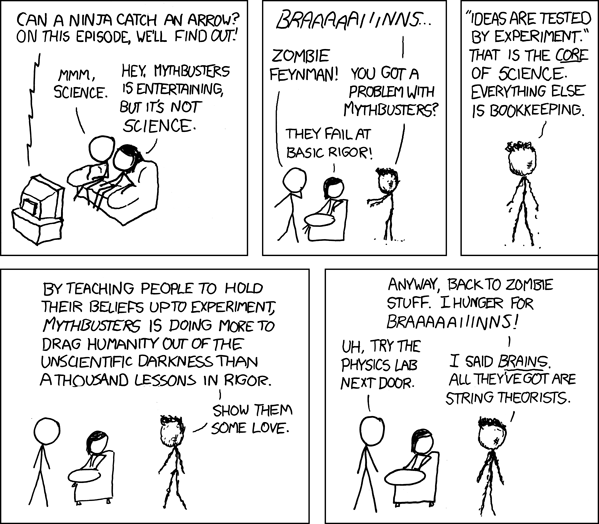I saw Max Payne last night. Overall, it’s an okay movie. It wasn’t boring, it wasn’t slow, and we stayed entertained the whole time. Cool CGI and camera stuff also. But, there was too much that broke the suspension of disbelief for us. I mostly think it was the dialog and the fact that it was a video game movie.
A “video game movie” is one that’s clearly made for fans of the game. I think directors are still learning how to turn a video game into a good movie, in the same way that they have learned how to turn books into movies. If you ever want to talk about a video game movie, or movie production, I’m always interested in that stuff. But that’s not my point here.
Like I said, a video game movie is made for the fans. That is to say, other people who play video games. I’d say, based on my personal knowledge and experience, that video game fans (and are likely to go to a Max Payne movie), also tend to like the Mythbusters. I do.
In case you don’t accept that assumption, you should know that last week’s Mythbusters had a “special sneak preview” Max Payne trailer during the episode. I did not see this trailer advertised during other shows. Somehow Rachel Ray’s audience doesn’t seem like the Max Payne type. So, clearly the marketing staff for the movie and Discovery Channel agree that people who are watching Max Payne have probably seen a few Mythbusters episodes.
The reason I bring this up is because in one scene, Max is underwater in a river, and there are handguns being fired at him. He’s probably 10 feet under, and the bullets are whizzing by him. In fact, it’s the exact same situation that the Mythbusters tested several years ago, and busted. But it’s in this movie.
Now, despite having written several paragraphs about this, I swear I’m not a foaming-at-the-mouth movie nerd. I’m not going to scream about it not being realistic. It was a cool looking shot, and the movie was a good way to spend 90 minutes. But it was another moment where something in my brain was awkward moment that helped break the suspension of disbelief that movie makers try so hard to achieve.
I feel like there’s some Seth Godin-esque point to be made here. When you do something for an audience, be sure to think about their perspective.

